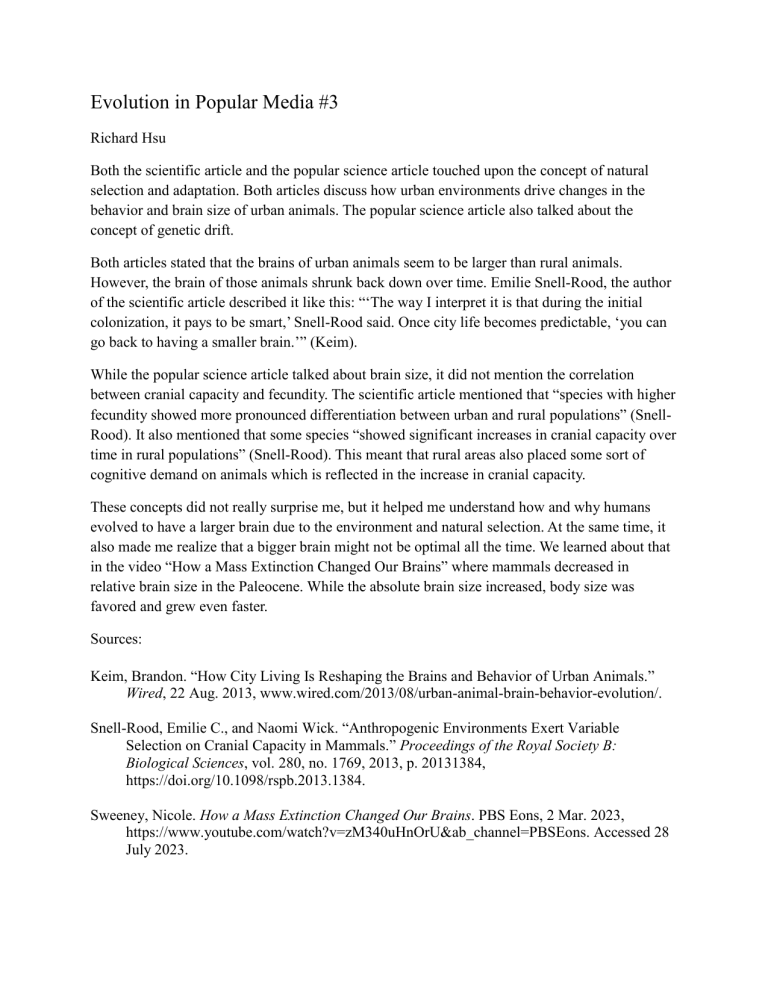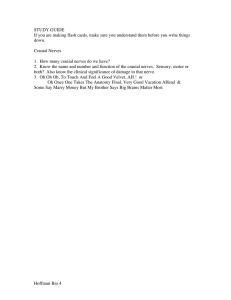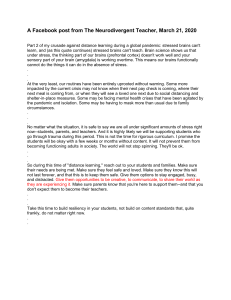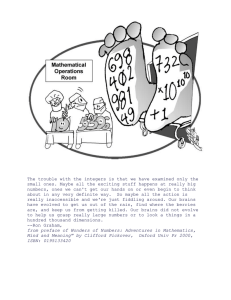
Evolution in Popular Media #3 Richard Hsu Both the scientific article and the popular science article touched upon the concept of natural selection and adaptation. Both articles discuss how urban environments drive changes in the behavior and brain size of urban animals. The popular science article also talked about the concept of genetic drift. Both articles stated that the brains of urban animals seem to be larger than rural animals. However, the brain of those animals shrunk back down over time. Emilie Snell-Rood, the author of the scientific article described it like this: “‘The way I interpret it is that during the initial colonization, it pays to be smart,’ Snell-Rood said. Once city life becomes predictable, ‘you can go back to having a smaller brain.’” (Keim). While the popular science article talked about brain size, it did not mention the correlation between cranial capacity and fecundity. The scientific article mentioned that “species with higher fecundity showed more pronounced differentiation between urban and rural populations” (SnellRood). It also mentioned that some species “showed significant increases in cranial capacity over time in rural populations” (Snell-Rood). This meant that rural areas also placed some sort of cognitive demand on animals which is reflected in the increase in cranial capacity. These concepts did not really surprise me, but it helped me understand how and why humans evolved to have a larger brain due to the environment and natural selection. At the same time, it also made me realize that a bigger brain might not be optimal all the time. We learned about that in the video “How a Mass Extinction Changed Our Brains” where mammals decreased in relative brain size in the Paleocene. While the absolute brain size increased, body size was favored and grew even faster. Sources: Keim, Brandon. “How City Living Is Reshaping the Brains and Behavior of Urban Animals.” Wired, 22 Aug. 2013, www.wired.com/2013/08/urban-animal-brain-behavior-evolution/. Snell-Rood, Emilie C., and Naomi Wick. “Anthropogenic Environments Exert Variable Selection on Cranial Capacity in Mammals.” Proceedings of the Royal Society B: Biological Sciences, vol. 280, no. 1769, 2013, p. 20131384, https://doi.org/10.1098/rspb.2013.1384. Sweeney, Nicole. How a Mass Extinction Changed Our Brains. PBS Eons, 2 Mar. 2023, https://www.youtube.com/watch?v=zM340uHnOrU&ab_channel=PBSEons. Accessed 28 July 2023.




